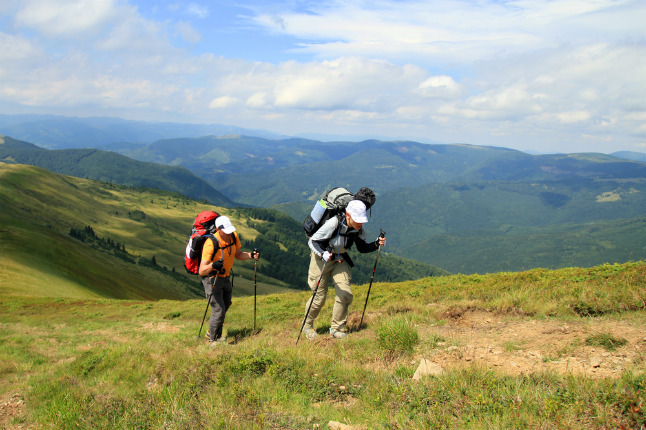7 Tips For Handling Hot Summer Hikes
Lacing up your boots and hitting the trail on a summer morning—there's nothing better. More sunshine means you can take longer routes and enjoy more of the great outdoors, but the sun and summer heat can also be a deterrent for hikers. What appears to be a temperate day from indoors or on the forecast the night before can seem dangerously hot when you're trekking uphill in the middle of the day.
The sun and heat are no excuse not to venture out, though, there are a few key strategies for dealing with the soaring temperatures of summer on your next weekend hike.
—Choose clothing wisely. What you wear is one of the most important factors in staying cool and protected from the sun. The best option for hot weather is a loose-fitting, light-colored outfit made of material that doesn't weigh much (no cotton). Dark, tight clothing traps heat and moisture, which is not only uncomfortable, but can also be dangerous. Sunglasses and visors (not traditional hats) are also important for blocking the sun's rays and staying cool.
—Start Early. The temperature and sun is typically most overwhelming between 11 a.m. and 2 p.m. and it can feel even worse if you're still working on your ascent. Start early and climb in the morning to avoid the most oppressive part of the day.
—Care for your skin. We know, we know—you've heard the old advice "wear sunscreen" about a billion times already, but there are some things you might not know. For example, spray sunscreens don't offer great protection and many other sunscreens have harmful ingredients—check out our outdoor athlete's guide to skincare in the summer for the full list.
—Hydrate. It's no secret that dehydration is a big issue in the summer and when you're dehydrated, not only does the heat feel even more extreme, but you also run an increased risk of heat exhaustion and heat stroke. Learn about how much water you should be drinking and then stay hydrated with cold water and other cool liquids like smoothies.
Keep in mind, though, that there is a risk of overhydrating (especially for athletes in the heat) and drinking too much water can be deadly.
—Refuel. Just as it's important to stay hydrated, it's crucial to add electrolytes, which are primarily responsible for maintaining a balance of fluid in your body. Those spending a lot of time outside in the summer (like hikers) are at risk for drinking too much water, which then throws off sodium levels and creates a big problem called Hyponatremia. Without enough sodium to regulate fluid levels, the excess water seeps into the cells and causes swelling. When that swelling gets to your brain you need to seek immediate medical help, so be sure to maintain a good balance with electrolytes.
—Take regular breaks. If you're starting to feel too hot or drained of energy, get to a cool spot and chill out for a while. It takes some time for our body temperature to come down, so wait until you're breathing normally, your heart rate has come back down and then take a few more minutes to be safe. Generally you should be resting for at least 15 minutes to take some of the strain off your body.
—Know the signs of heat stroke. Heat stroke is one of those things—everyone thinks it won't happen to them. When it comes to heat stroke, though, it's better to be prepared.
More Reading:
Incredible American Hikes You Need to Take this Summer
Summer Dangers You Should Know About
5 Easy Ways to Make Sure You Stay Hydrated this Summer
